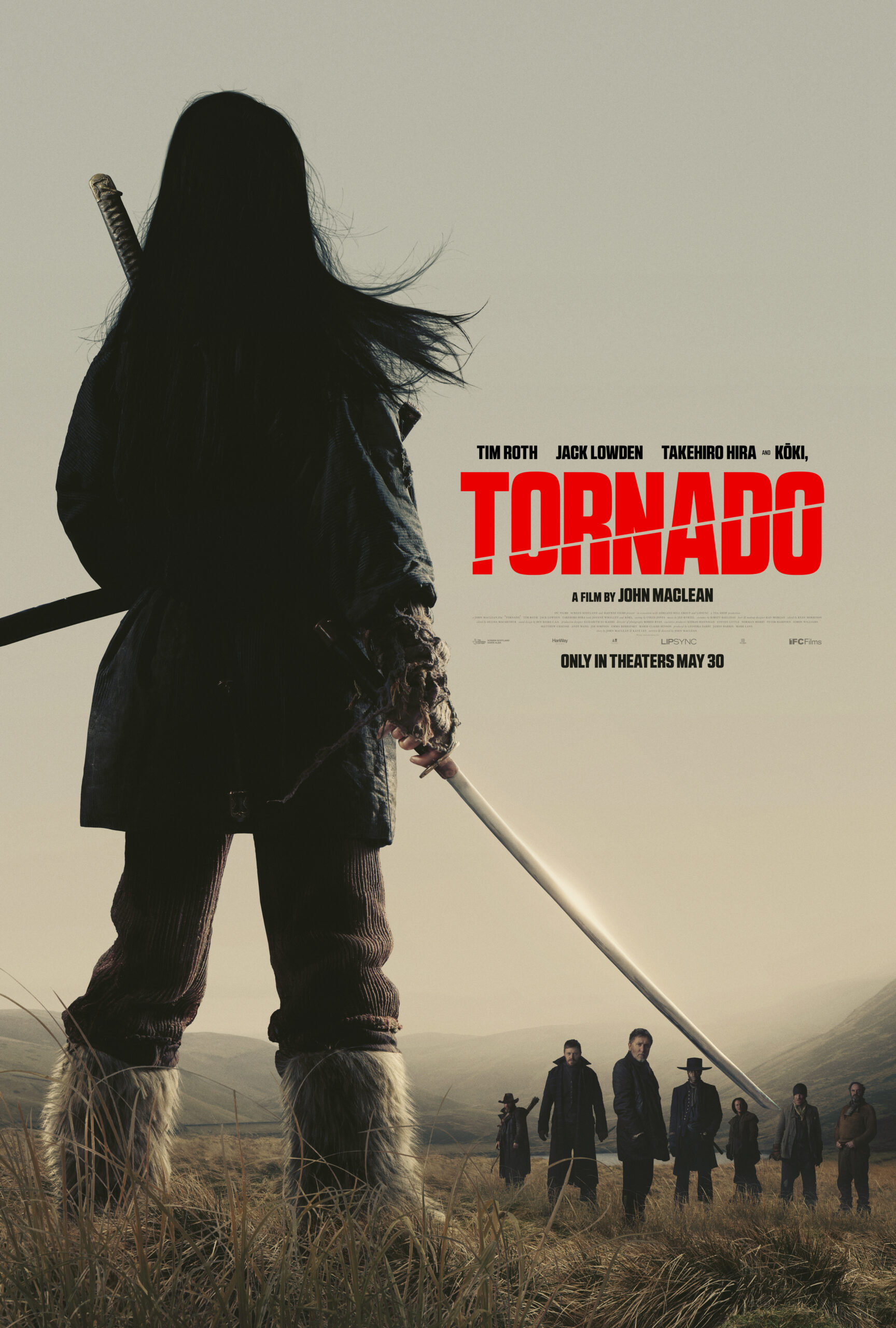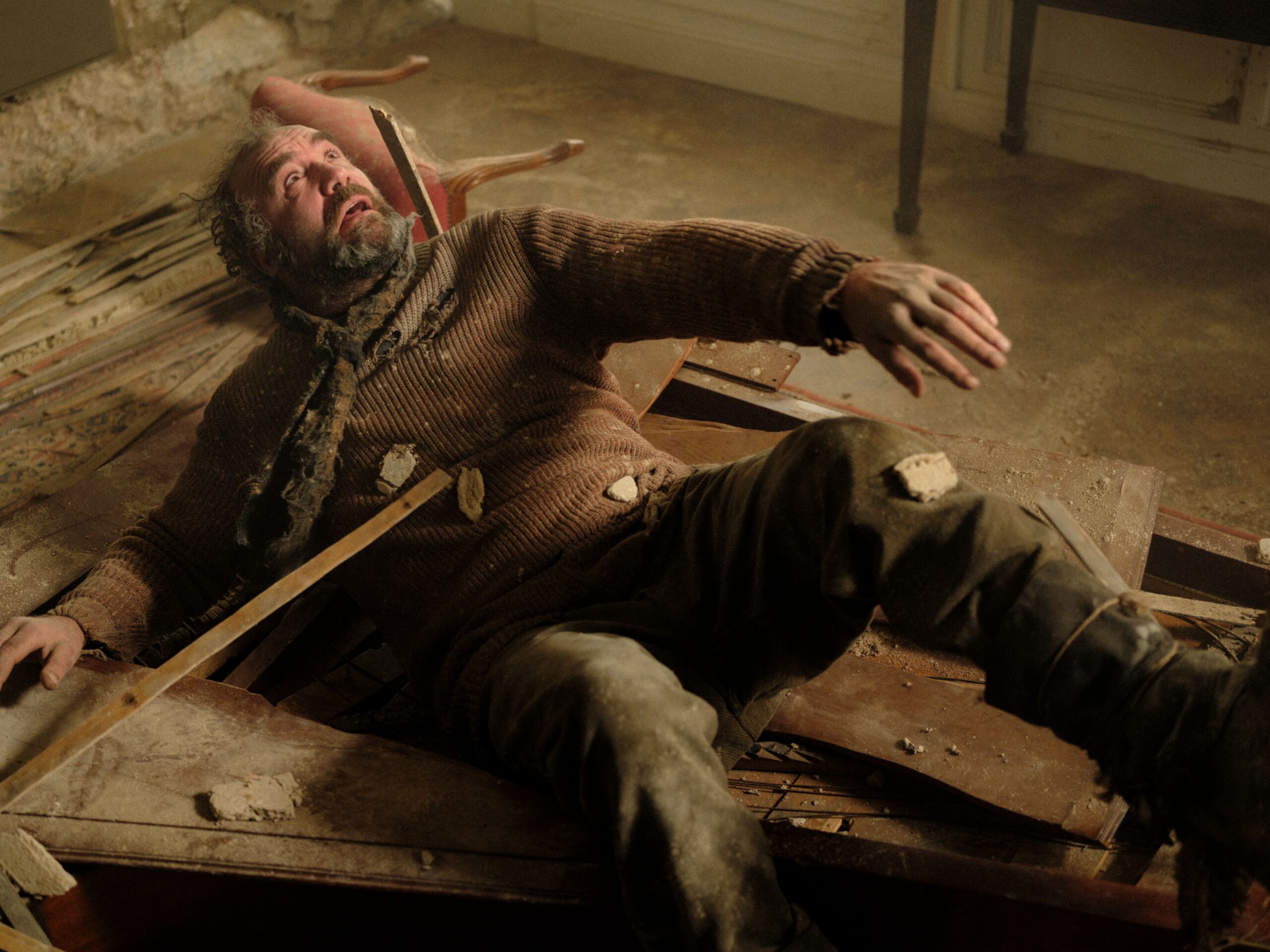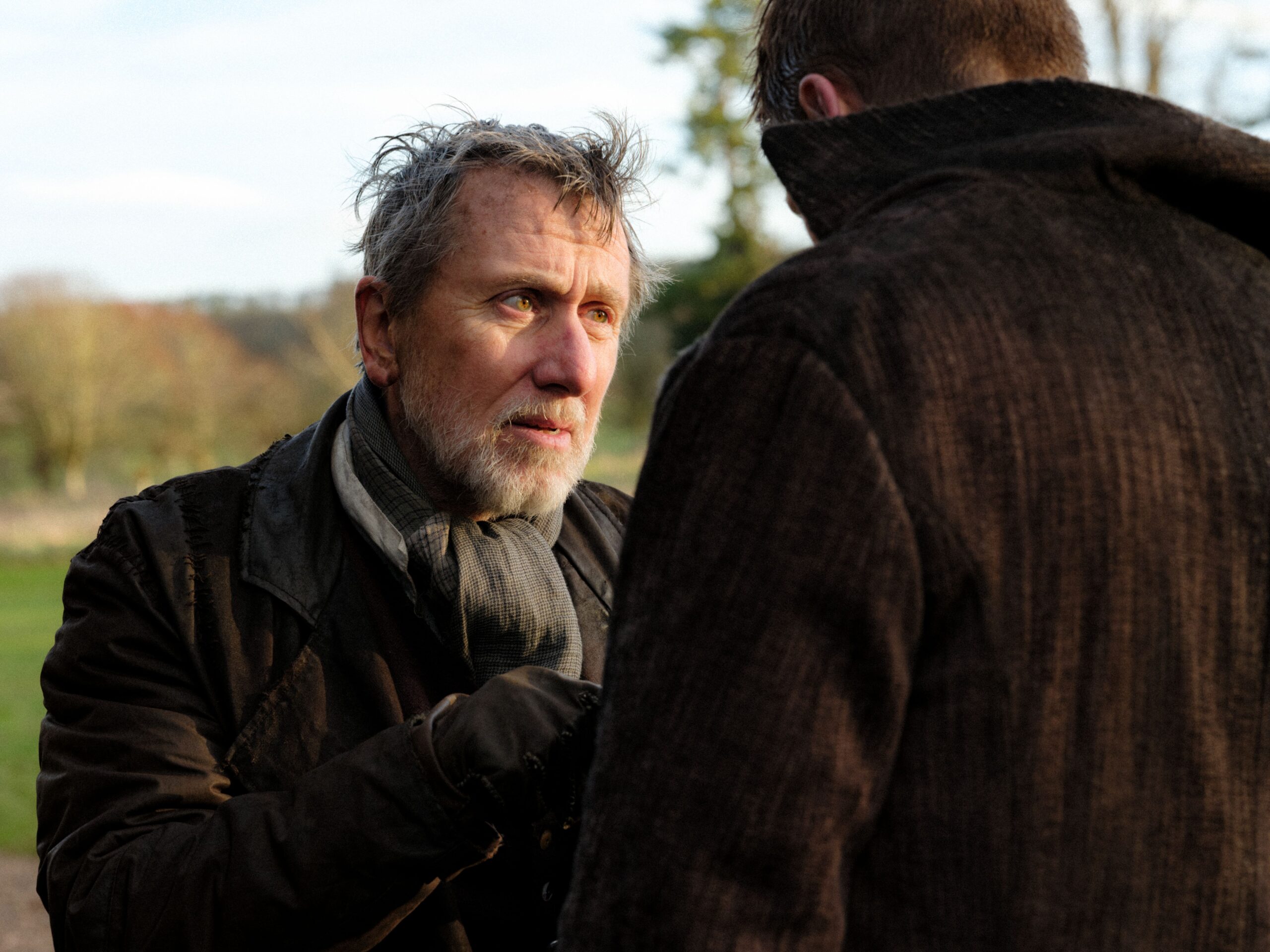Want to hear more from the actors and creators of your favorite shows and films? Subscribe to The Cinema Spot on YouTube for all of our upcoming interviews!
Just from its title and its premise, I have had Tornado on my radar for some weeks now. I have never really been let down by a film distributed by IFC Films and Shudder. Instead, this turned out to be one of those films that works well. To my surprise, IFC Films, HanWay Films, and Tea Shop Productions have collaborated on a rather remarkable hour-and-a-half period flick. While this is more of an independent work of art, the film’s status as such never fails to captivate. It could truly become a wholly epic masterpiece if given more resources. Despite that, Tornado takes lovers of film back to the good ol’ days of cinema, immersed in Wild Westerns and Samurai dramas.
Tornado is written and directed by John Maclean, with the story by Maclean and Kate Leys.
In this review, I will discuss Tornado. As this article’s title suggests, no spoilers will be present.

IFC Films’ Tornado Synopsis
According to IFC Films Press, here is the official synopsis for John Maclean and Kate Leys’ action drama thriller period film, Tornado.
Set in the rugged landscape of 1790s Britain, Tornado is a young and determined Japanese woman who finds herself caught in a perilous situation when she and her father’s travelling puppet Samurai show crosses paths with a gang of ruthless criminals led by Sugarman, and his ambitious son Little Sugar. In an attempt to create a new life for herself, Tornado seizes the opportunity to take matters into her own hands and steal the gold from their most recent heist. With her father murdered by the gang and her life in grave danger, Tornado races against time to escape a violent demise and avenge her father’s death.
IFC Films Press
Discussion
What’s outstanding about Tornado is Maclean and Leys’ straightforward storytelling. Sure, it’s predictable in some places and unpredictable in others. That is not to mention that the combination of in media res narration and plot structure helps keep that story compact. The co-screenwriters’ ability to build up a consistent pace in the story is due to the time-and-place setting in the British Isles in 1790, the diverse array of characters, and the deep fondness for cinema as a craft.
According to Maclean’s director’s statement via IFC Films’ production notes for the film, many specific elements and inspirations are incorporated into the narrative. Tornado takes after, but is not limited to, Hiroshi Teshigahara and Kōbō Abe’s Woman in the Dunes—based on Abe’s novel of the same name—as well as Akira Kurosawa’s extensive film catalog. I can absolutely feel this combination in the eponymous lead Tornado’s (Kōki) desire to be on her own. This clashes perfectly with the arrival of criminal Sugarman (Tim Roth) and his band of bandits, akin to Kurosawa’s Seven Samurai. Each bandit has a role to play, either possessing a skill or a lack thereof. Yet, Tornado is a different sort of film than I had expected, and I mean that with the highest of compliments.
Blending Westerns with the Samurai genre into a British period drama is a smart move. Maclean and Leys permit the audience to witness a juxtaposition in binaries—e.g. guns and swords, wealth and poverty, dishonesty and integrity, life and death—but ultimately realize that there might not be a binary to begin with. Instead, what Tornado discovers could just be her immanence within the narrative.
The Technical Aspects
I cannot fully express my appreciation for the filmmaker’s grand gesture to cinema. Tornado is an imperfect film, but the carefulness that comes into it might as well render it so. Production designer Elizabeth El-Kadhi’s set pieces of the British Isles are captured beautifully by director of photography Robbie Ryan’s camera. Gaffer Andy Cole is brilliant at work with the lighting, but also, Ryan showcases wisdom in exploiting natural sunlight during the second act. Alongside that, I admire the colorful image at the transition between the final two acts, exhibiting a dark blue morning sky contrasted with brown trees and a yellow-orange fire.
Additionally, costume designer Kirsty Halliday underscores the characters’ identities. For example, Tornado and the bandits’ clothing are purposefully incongruous with the austere interior of a family’s mansion in the opening act. The bandits’ dark outfits match more with the mansion’s carpeting and wooden flooring than with the white walls and marble statues. This displays a disparity in class status and in the characters’ different means of making a living for themselves.
Music composer Jed Kurzel scores an unceasing symphony-like soundtrack. The great, suspenseful instrumental as Tornado runs from the bandits is appetizing. This leads wonderfully into the suspenseful score when they accost her wagon. The sped-up violin scoring in the third act is a thrill, especially with the exacerbation of the external conflict. Kurzel’s soundtrack then takes a dramatic and sorrowful turn once Tornado feels she is at a total loss. The slow, determined scoring at the end of the third act is captivating, but so is the fantastical instrumental as closure is found. Supervising sound editor Jack Wensley and sound designer Ben Baird add to the soundtrack with wind bristling over brush and through trees and over mountains.
John Maclean’s Filmmaking
Maclean mentions that he storyboarded the film’s sequences. However, that isn’t listed in the end credits, to my knowledge. I love how the filmmaker breaks down the narration into four acts instead of the basic three. The frame-by-frame direction is feasible via Ryan’s cinematography of moments such as two silhouettes atop a hill at the top-right corner of the frame. As violent as I wanted Tornado to be, the film doesn’t reach an epic level until the closing act. The narrative earns its immense praises here, wherein the protagonist turns into an unstoppable force.
Next to that is the second act’s inclusion of puppetry, which I wish there were a bit more of. Essentially, Tornado and Fujin tell a story of two opposing swordsmen and what happens when one is not too vigilant. In fact, so much of the film has to do with watchfulness, particularly in a young boy (Nathan Malone) as well as Sugarman’s son, Little Sugar (Jack Lowden). This theme is put to the test when Sugarman and his group engage in a wild goose chase after Tornado. Maclean and Leys write in a clever line of dialogue at the end of the second act—that what she needs to free herself from her predicament(s) is out of everyone’s reach. To that end, the screenwriting is most beneficial when incorporating philosophical elements.
The Tornado Philosophy
The film begins with a quote by Soviet-Russian poet Arseny Tarkovsky that had me ruminating.
I would readily pay my life/ For a safe place with constant warmth/ Were it not that life’s flying needle/ Leads me on through the world like a thread
Arseny Tarkovsky
Human beings want to belong in the world, but each has a compass guiding them on their path. Much can be learned from the characters, especially Fujin. He teaches Tornado concentration and patience in a world weighed down by stressful pressures. Even in moments of leisure and play, he has something to convey to her. It might be why Maclean and Leys settled on the protagonist’s name, Tornado. The film often focuses on where the wind blows and on the obstacles directed toward the character in her quest for freedom. In the eye of the tornado lie certain truths that aren’t to be hidden. Perhaps, we are who we are due to the choices each of us makes, but it is how we use our strengths that defines whether we are good or bad people.

The Crew Behind Tornado
Robbie Ryan (James Blunt’s “You’re Beautiful” music video, The Favourite, Marriage Story, C’mon C’mon, Poor Things, Kinds of Kindness) serves as the director of photography.
Andy Cole serves as the gaffer. Norman Wilcox-Geissen serves as the stills photographer.
Ryan Morrison and Selina MacArthur serve as the editors.
Jed Kurzel (The Babadook, Alien: Covenant, Overlord, Guillermo del Toro’s Cabinet of Curiosities, Monkey Man) serves as the music composer.
Jack Wensley serves as the supervising sound editor. Ben Baird serves as the sound designer.
Colin Jones (The Descent: Part 2, Ghost Rider: Spirit of Vengeance, Zero Dark Thirty, Possum, Vivarium, Resident Evil: Welcome to Raccoon City, Fall, Hellraiser reboot) serves as the casting director. Marta Noguera is the casting associate.
Andy Bennett serves as the stunt coordinator.
Gary Arthurs and Charlie Pawlett are the stunt doubles. Naomi Chai serves as Kōki’s stunt double.
Mattes and Miniatures are the puppet makers for the middle act of the film.
Colin Purves serves as the lead puppeteer and coordinator. Kim Bergsagel and Symon Macintyre are the puppeteers.
Elizabeth El-Kadhi serves as the production designer of the film. Jackson Pritchard and Robin Jones are the art directors.
Rory Loveless and Alex Jones are the assistant art directors. Matt Ramsey is the standby art director.
Isabella Brazier Jones serves as the set decorator.
Kirsty Halliday serves as the costume designer. Kat Morgan serves as the hair and makeup designer.
Paul Rebanks is the hair & makeup supervisor. Beth O’Donnell, Hazel Smith, and Courtney Marley are the makeup artists.

The Cast of Tornado
Kōki portrays the titular character, Tornado.
Tim Roth (Reservoir Dogs, Pulp Fiction, Funny Games remake, The Incredible Hulk, The Hateful Eight, Twin Peaks: The Return, Resurrection, She-Hulk: Attorney at Law) portrays Sugarman, the main protagonist of the film.
Jack Lowden portrays Little Sugar, Sugarman’s son.
Takehiro Hira (LeSean Thomas and Takeru Satō’s Yasuke, Gran Turismo, Monarch: Legacy of Monsters, Rachel Kondo and Justin Marks’ Shōgun, Captain America: Brave New World) portrays Fujin, Tornado’s Samurai father.
Nathan Malone plays the boy.
Alex Macqueen plays the laird, while Kerry Lyn Hamilton plays the lady of the house. Nina Barnett plays Charlotte.
Raphaël Thiérry portrays Mint, a strong man in a traveling troupe.
Joanne Whalley portrays Vienna Crawford.
Clive Kneller plays Weasel.
The Bandits
Rory McCann (Hot Fuzz, Game of Thrones, Jumanji: The Next Level, The Legend of Vox Machina Season 1, John Whittington and Toby Ascher’s Knuckles, Gladiator II) portrays Kitten, Sugarman’s right-hand man.
Jack Morris portrays Squid Lips, while Dennis Okwera plays the psychotic bandit.
Jamie Michie portrays the archer bandit. Sammy Hayman plays the archer’s assistant.
Bryan Mills plays the musician bandit.
Ian Hanmore (Game of Thrones Season 2, Dungeons & Dragons: Honor Among Thieves, Mickey 17) plays the thief bandit.
Douglas Russell (The Survivalist, The Batman, Adolescence) plays “Lazy Legs”.
The Troupe of Performers
Jude Cranston portrays a knife thrower.
Art director Robin Jones portrays the drummer.
Claire McVinnie plays a campfire nomad. Andrew Cranston plays the artist.
Nicholas Munro and Donald Mitchell play Troupe Men #1 and 2, respectively.
Jean Maclean plays a mudslinger. Carlo Maclean plays a lion child.
Michael Jones plays a “handle man”.
Edward Dogliani plays a puppet watcher.

Character Developments and Performances
Kōki’s performance is lovely, given that Maclean molds her character from the first act to the last one. Tornado is a resourceful individual, such as in her craftiness with puppet strings or the devices used against her. While the co-writers do not exactly explain why she desires to leave her current life behind, her resolute personality is made apparent in her decision to insert herself into the external conflict at hand. The model/ songwriter navigates through pathos better than others in the film, allowing her to be a promising scene partner with pretty much anyone. Kōki has some decent line readings, but I’m more concerned with Tornado’s application of life lessons in the real world.
In comparison, Tim Roth’s performance as Sugarman is nice. There are two or three scenes wherein I feel as if he closely resembles characters he’s portrayed in Quentin Tarantino films. However, Sugarman is distinct through his role as a father figure. The character foils Fujin in this regard, and everything spoken of the former in exposition could have been shown more. Sugarman rarely gets his hands dirty, which is why he has Little Sugar as a son. Moreover, Maclean and Leys don’t paint him as a villain but as an individual whose mistakes bear heavy consequences. This note is important in understanding the bandits’ personalities, purposes, and their possible perceptions of him as a leader.
Final Thoughts on Tornado
For those who wish to survive in battle, there is only death. I am Tornado. Remember my name.
Tornado (Kōki)
As a period piece, Tornado fits the standard of dramas and action-thrillers. It is definitely a separate entity from films made by Akira Kurosawa, Martin Scorsese, and other legendary filmmakers. However, John Maclean’s overall narration earns its merits in the meticulous details. This is a must-see flick simply because it knows its identity as a genre title.
4.5/5 stars
John Maclean and Kate Leys’ Tornado is now playing in theaters across the United States, Canada, Australia, and New Zealand!
The film premieres in theaters across the United Kingdom via Lionsgate on June 13th and is expected to stream via Shudder later this year!
For more action, drama, and thriller-related news and reviews, follow The Cinema Spot on Facebook, Twitter, Instagram, and Bluesky! Also, follow us on Letterboxd for further feature film, short film, and limited series reviews!
Managing editor & film and television critic with a Bachelor's of Arts in English Literature with a Writing Minor from the University of Guam. Currently in graduate school completing a Master's in English Literature.



